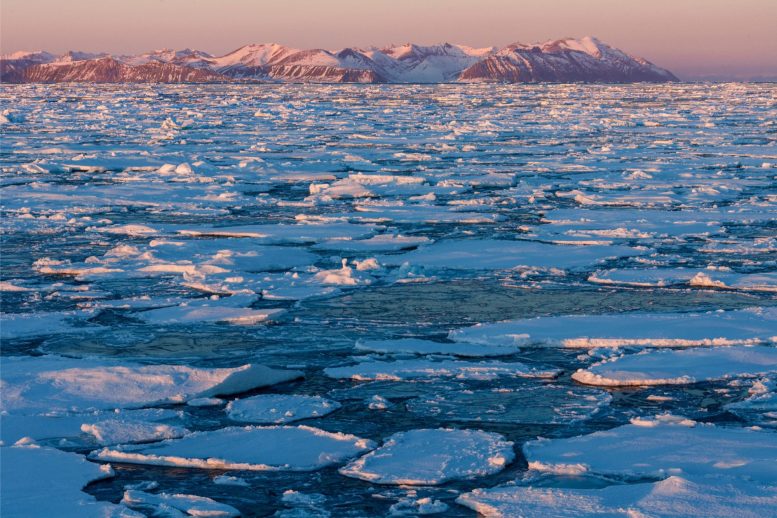
Recent research indicates that while sea ice in the Arctic Ocean is currently speeding up due to warming temperatures and thinning ice, climate models predict a slowdown during the summer months in the coming decades. This dynamic has significant implications for marine transportation safety, the wellbeing of Indigenous communities, ecosystems, and the global climate system. The study highlights a discrepancy between observational data and model projections, underlining the complexity of predicting sea ice movement and its broader impacts.
Will ice floating in the Arctic Ocean move faster or slower over the coming decades? The answer to this question will tell us whether marine transportation can be expected to get more or less hazardous. It might also have important implications for the rate of ice cover loss, which is hugely consequential for Northern Indigenous communities, ecosystems, and the global climate system.
While observational data suggest the trend has been towards faster sea ice speeds, climate models project that those speeds will slow down during the summer season. This contrast has led to some questions around the plausibility of the model projections.
In a new paper published in The Cryosphere, Lassonde School of Engineering Associate Professor Neil Tandon and Postdoctoral Visitor Jamie Ward found that, while the mechanisms driving the ice slowdown remain plausible, questions remain regarding the timing of the slowdown.
“Understanding how sea ice motion is going to change is clearly of interest, and yet we didn’t really know if what the models were projecting was reasonable,” says Tandon, who is also with the Centre for Research in Earth and Space Science (CRESS) at York University. “It seems that we can expect sea ice to continue to speed up for some time, but there will be a point in the coming decades when the dynamics will shift.”
The Hazard of Floating Sea Ice
Floating sea ice presents a particular hazard for marine transportation, says Tandon, pointing to a dramatic example from 2017 when sea ice trapped and sunk two fishing boats around Newfoundland. And the faster the ice, the more hazardous the conditions.
To understand why sea ice has been speeding up, Tandon says a spring can be a useful analogy. As temperatures warm and the ice thins, it can expand and contract more readily, just as a spring made of thinner metal can expand and contract more easily compared to a spring made of thicker metal.
“As the thinner sea ice expands and contracts more, it generates more momentum for the sea ice, just like one of those spring-loaded toy cars goes faster the farther back you pull it,” explains Tandon.
Mechanisms of Sea Ice Movement
However, this is not the only force acting on the ice, and when the ice gets thin enough, the internal stresses that produced “springiness” start to fade and other forces start to dominate.
“As ice enters what they call a free drift state, the internal stress becomes negligible, and the external forces of wind and the ocean surface tilt start to dominate. The models suggest that changes in the wind and ocean surface tilt will drive a slowdown of the sea ice during the summer season.”
Tandon says that while the models generally agree that this summertime slowdown will occur, they do not agree on when this slowdown will start. Some models suggest that the slowdown will start within the next decade while others suggest it will start toward the end of this century.
Faster ice drifts can create hazardous conditions for marine transport, so in that sense, an ice slowdown could be seen as a positive, but Tandon says there are bigger considerations.
“It doesn’t change the fact that sea ice cover is steadily declining, right? This is a concern because of the impact on ecosystems, the Indigenous populations that rely on being able to hunt certain animals, the animals’ ability to survive the changing habitat, and the overall effect on the global climate,” says Tandon. “But, I would say it’s marginally good news in that the models are suggesting that some of the worst aspects we were expecting about ice cover decline are not being projected.”
Reference: “Why is summertime Arctic sea ice drift speed projected to decrease?” by Jamie L. Ward and Neil F. Tandon, 5 March 2024, The Cryosphere.
DOI: 10.5194/tc-18-995-2024









Be the first to comment on "A Dramatic Reversal Is Coming – Deciphering the Arctic Ice Speed Paradox"